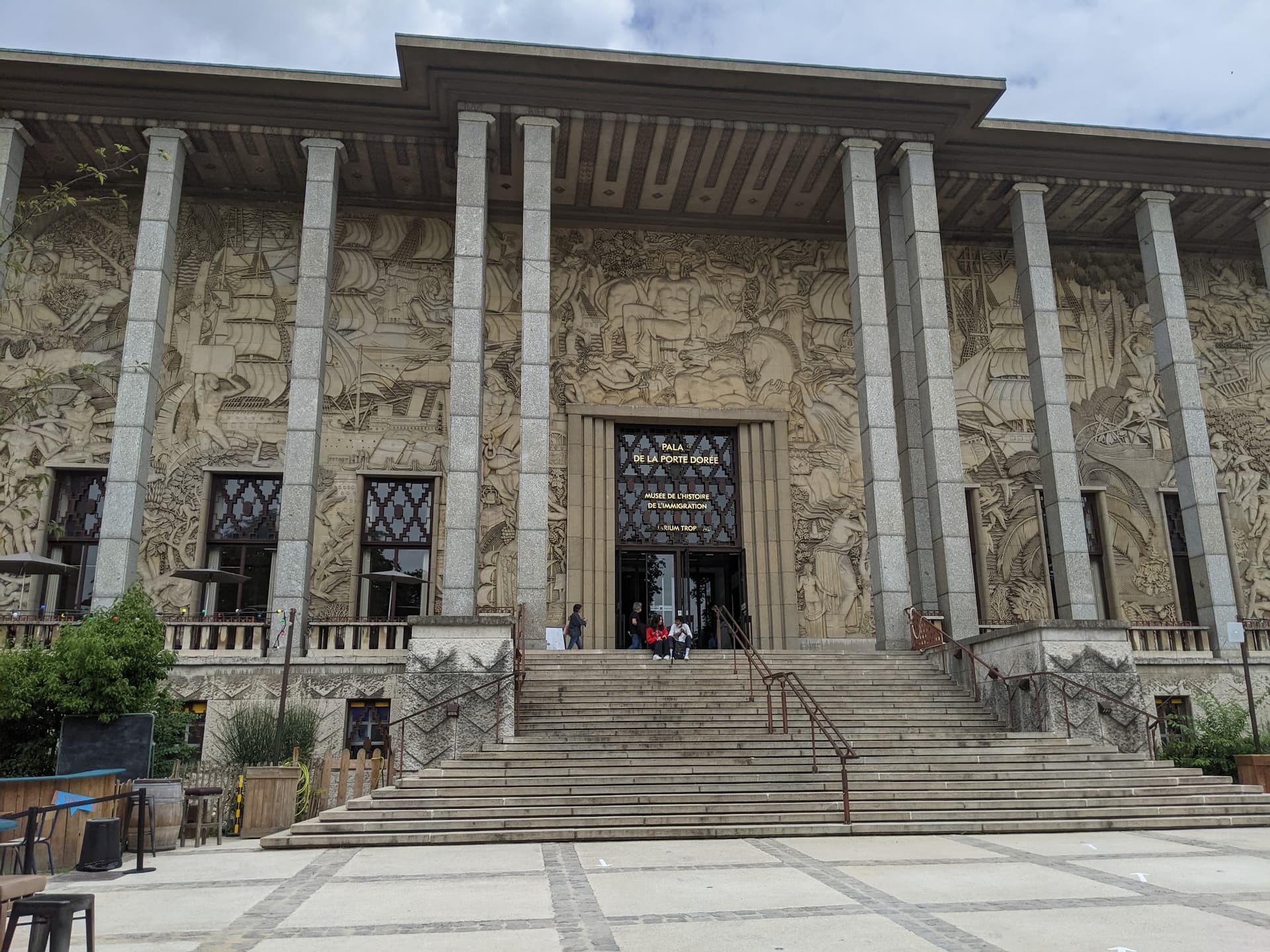Audio GuidePalais de la Porte Dorée
Aquatic life including crocodiles, sharks and electric fish, kept in a 1930s exhibition hall.
The Palais de la Porte Dorée is an impressive Art Deco edifice located in the heart of Paris, constructed in the late nineteen twenties and early nineteen thirties for the Colonial Exposition. Designed by the architect Albert Laprade in collaboration with Léon Jaussely and Léon Bazin, it was initially established as the Musée des Colonies. The building's elegant symmetry, expansive façade, and clever use of natural light highlight a fusion of classical and modern styles.
Adorning the façade is a large bas-relief by Alfred Janniot, depicting the wealth and natural splendour of the French colonies. The interior features a grand central hall that once hosted magnificent colonial events. This space is embellished with a substantial fresco by Pierre-Henri Ducos de La Haille, which celebrates the cultural and economic contributions of the colonies. Two oval salons, with exotic decorations and intricate furniture, offer further insights into the past.
Today, the building narrates a different tale. It is home to the National Museum of the History of Immigration, the only museum in the country dedicated to the history and culture of immigration. In the basement, a tropical aquarium exhibits a lively collection of aquatic life, such as crocodiles, sharks, and electric fish, reflecting a commitment to environmental conservation.
This historic yet continually developing site provides visitors with a distinctive journey through art, history, and natural wonders, encouraging exploration of the connections between France’s colonial heritage and its contemporary cultural identity.






